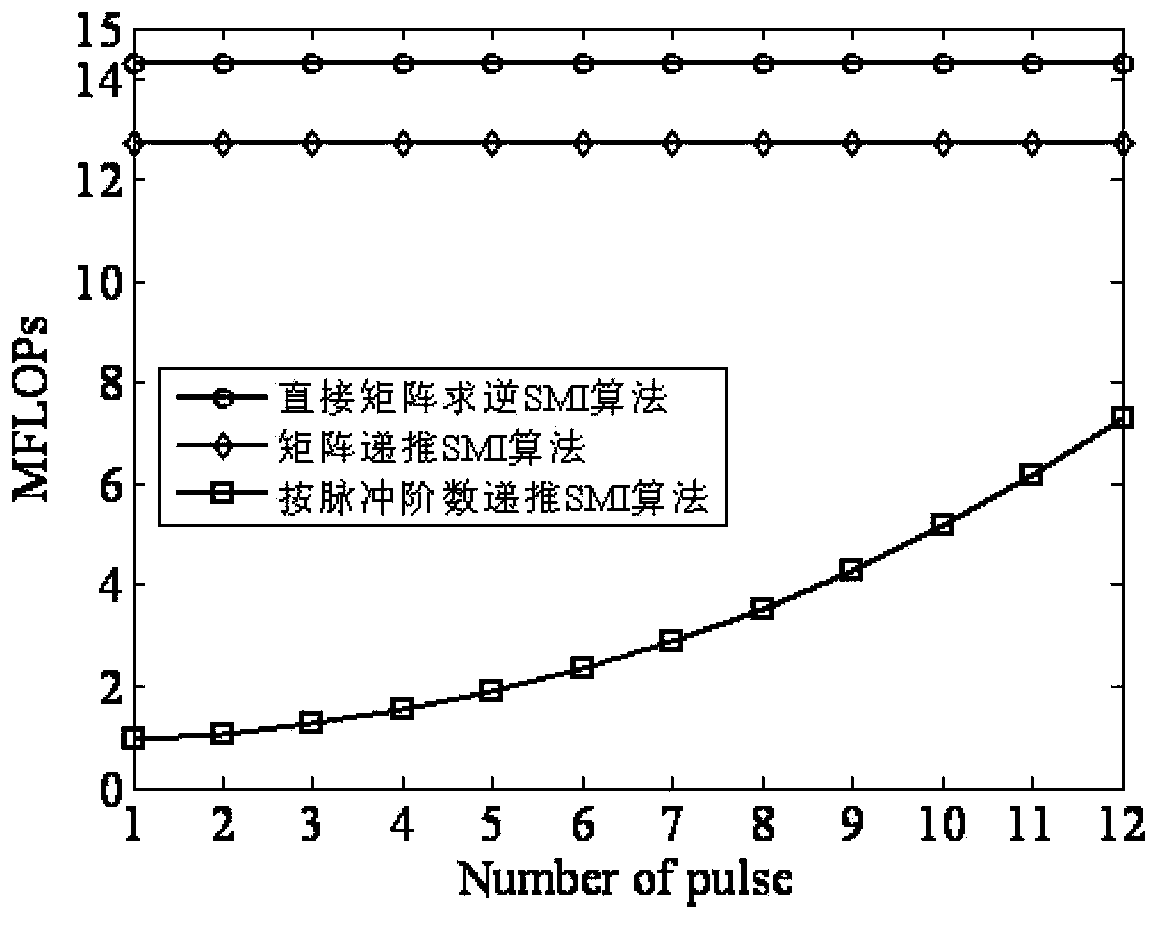Iterative computation method for self-adaptive weight number in space time adaptive processing (STAP)
An adaptive weight and space-time self-adaptive technology, which is applied in radio wave measurement systems, instruments, etc., can solve the problem that the direct inversion of the full-dimensional covariance matrix cannot be realized, consumes the amount of system computation and equipment, and is difficult to set the initial Inverse Matrix Equivalent Solution to SMI Algorithm Adaptive Weight Vector and Other Problems
- Summary
- Abstract
- Description
- Claims
- Application Information
AI Technical Summary
Problems solved by technology
Method used
Image
Examples
Embodiment Construction
[0053] The implementation of the method of the present invention will be described in detail below in conjunction with the accompanying drawings.
[0054] In order to describe the content of the present invention more conveniently, at first utilize the sequence main submatrix of Hermitian matrix to iteratively calculate the inverse of covariance matrix as follows:
[0055] Suppose the matrix R is a Hermitian matrix of D×D dimension, and the matrix R d+1 Represents the d+1th order primary sub-matrix of R, ie R d+1 =R(1:d+1,1:d+1). According to the characteristics of the block Hermitian matrix, the matrix R d+1 The inverse of the R d to calculate the inverse of . Since the matrix R d+1 The inverse matrix Q d+1 is also a Hermitian matrix, then
[0056] Q d + 1 = Q d ...
PUM
 Login to View More
Login to View More Abstract
Description
Claims
Application Information
 Login to View More
Login to View More - R&D
- Intellectual Property
- Life Sciences
- Materials
- Tech Scout
- Unparalleled Data Quality
- Higher Quality Content
- 60% Fewer Hallucinations
Browse by: Latest US Patents, China's latest patents, Technical Efficacy Thesaurus, Application Domain, Technology Topic, Popular Technical Reports.
© 2025 PatSnap. All rights reserved.Legal|Privacy policy|Modern Slavery Act Transparency Statement|Sitemap|About US| Contact US: help@patsnap.com



